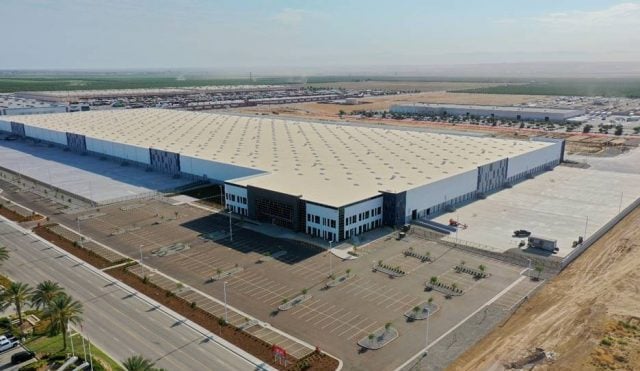IRVINE, CA—With such tight industrial vacancy in Orange County, tenants need to discuss their leases far in advance of expiration or they may find themselves out of luck, JLL's senior managing director Louis Tomaselli tells GlobeSt.com exclusively. We spoke with Tomaselli about the market after his firm's recent report about large blocks of industrial space diminishing significantly in Orange County.
GlobeSt.com: To what do you attribute the decrease of large blocks of industrial space in Orange County?
Tomaselli: It's been a continuously changing answer. Back in 2008, when we had the economic challenges, we had a number of tenants who consolidated and had some business failures, adding space to the market. The first wave of occupancy came from tenants that were in the market and still had a business that was viable. They took advantage of the aggressive rates landlords were offering tenants. Then, during the recovery in 2010, tenants started to take advantage of the low rates and began leasing space for the long term at market-low rents, which started the occupancy drive. Then came the bifurcation of class-A space and class-B space. Lease rates grew quicker for class-A space, and yet there were still a lot of opportunities in class-B, and you could get more aggressive rates in class-B. More recently, there has been a lot of new construction in class-A space—eight to 10 new buildings, and almost all of them are in escrow or are leased or will be leased because they are new and 30-ft. clear, and tenants are willing to pay more for that space. We're also seeing tenants who don't need that space and are willing to take B space, but we're way below where we were before on alternatives. The continuing strong economy, combined with the lack of ability to build in infill markets and a tenant base that's not moving has led to the low availability of large blocks of industrial space.
GlobeSt.com: How is the industry responding to this lack of space availability?
Tomaselli: The national tenants recognize this because they see this across the country, so they're addressing their occupancy needs much earlier in the cycle. If they have a lease that's 24 months out, they're talking to their landlord now about renewing so they can control the space. Local tenants who hadn't addressed their occupancy needs that early will be forced to because they could lose their space if they over-negotiate their position. Landlords are happy to let them move and get a better-grade tenant in the space. This is an opportunity for landlords to get very aggressive and try to win back what they gave back in 2009-2010. Every side gets what they can at the time, and now it's the landlords' time. Tenants that haven't talked to their landlord or haven't really studied the market since '08-'10 are in for a big surprise. In a below-3% vacancy market, they will have to pay fair market rents today because the alternatives are very limited.
There are very low vacancies and market-high rents in the Inland Empire, but not every tenant can afford to move to the Inland Empire. There are drayage costs and lost employment to consider. If I were a tenant, I'd better be talking to my landlord early and renewing—it's important for them to do this. If they're looking for space, they will be looking at buildings that are coming up in a year or two and talking to landlords before the space is even on the market. You really have to be ahead of the game. What matters is having the data and transparency that will allow tenants to make a smart decision.”
GlobeSt.com: Do you expect to see a large ramp-up in construction for this type of space, or do you expect users to look elsewhere for it?
Tomaselli: There's more space opening up in the Inland Empire East, but space decisions are based on where you need to be for reasons other than size. If they need skilled workers or a higher lifestyle, tenants will pay to be here; if not, they will look at older markets in L.A. or in the Inland Empire, but they will have to drive farther. Logistics firms will likely go out there for the pieces that can be dragged out there, but if you're pulling things in from the port and servicing Southern California or Orange County specifically, you don't want to drag everything out to the IE East just to drag it back to save 20 cents. It's a metrical and mathematical equation, and you have to crunch the numbers and figure out what makes sense. There's often bifurcation between uses—some choose to house assembly here and then take 100,000 square feet of warehouse that could be growing to 200,000 square feet, look outside of Orange County and figure out where they can put it, such as Denver or Phoenix.
GlobeSt.com: What does availability for smaller space look like in Orange County?
Tomaselli: It's the same story all the way down. It's another example of what rates and prices have done. This is an entrepreneurial market. Everybody wanted to buy their own buildings, and prices went for $100 per square foot to $125 per square foot for small industrial to more than $250 per square foot, and some over $500 per square foot. Then, in 2008, it came back down, but now it's all the way back up again for industrial. We're within 20% of the peaks of '07 and '08. But nobody's building those buildings now like they were back then, creating more pressure on pricing. Maybe we will see infill being developed in to small buildings, which we haven't seen yet. That's the last part of the cycle we haven't yet seen. There's fear in that market because people aren't refinancing their houses to buy small industrial buildings anymore. And if a developer is going to pay a premium for land, they're going to put a big distribution center on it—it's better for the developer than building small buildings. That sector is very dynamic, and a lot of institutional money wants to be there.
© 2025 ALM Global, LLC, All Rights Reserved. Request academic re-use from www.copyright.com. All other uses, submit a request to [email protected]. For more information visit Asset & Logo Licensing.







